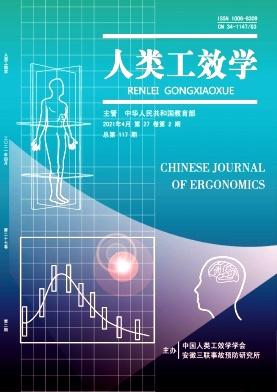The influence of resistance training on the magnitude of change in the resting metabolic rate, program compliance and related obesogenic anthropometric parameters in obese and normal-weight female employees
引用次数: 0
Abstract
Obesity is a global health concern affecting all walks of life, with alarming prevalence in South African employees. Various companies have already implemented health promotion programs in order to improve employee health; however research focusing on the effect of a resistance training intervention in order to address obesity among employees is scare. Therefore the aim of this study was to determine the influence of resistance training (RT) on the resting metabolic rate (RMR), body mass index (BMI), waist circumference (WC), fat mass (FM), fat-free mass (FFM) and compliance in a group of obese and normal-weight female employees. Seventy-seven pre-menopausal women (25 - 35 years) were recruited and divided into an obese, (BMI ≥ 30) and normal-weight group (BMI ≤ 25.0). Both groups completed a supervised progressive RT program (3 sessions of 40 -50 minutes/week), spread across 12 weeks. Assessments were performed every 4 weeks and results were analysed using the Linear Mixed Model procedure. The normal-weight group (NWG) showed practically significant increases from baseline to 12-weeks in FFM (d = 0.83), RMR (d = 0.58) and exercise compliance (d = 0.58) while the obese group (OG) showed practically significant decreases in WC (d = 0.32) and BMI (d = 0.31). Considering the intra-group % change (baseline to 12-weeks) it is clear that the NWG showed significant increases in RMR (7.0%), FFM (7.8%) and exercise compliance (15.8%) while the OG showed a significant decrease in WC (3.0%) and exercise compliance (9.3%). It seems therefore that the magnitude of change resulting from resistance training (moderate intensity) in NWG differs from that of the OG.阻力训练对肥胖和正常体重女性员工静息代谢率、项目依从性及相关致肥人体测量参数变化幅度的影响
肥胖是一个影响各行各业的全球性健康问题,在南非雇员中发病率惊人。许多公司已经实施了健康促进计划,以改善员工的健康;然而,专注于通过抗阻训练干预来解决员工肥胖问题的研究是令人恐惧的。因此,本研究的目的是确定阻力训练(RT)对肥胖和正常体重女性员工静息代谢率(RMR)、体重指数(BMI)、腰围(WC)、脂肪量(FM)、无脂量(FFM)和依从性的影响。招募77名绝经前妇女(25 - 35岁),分为肥胖组(BMI≥30)和正常体重组(BMI≤25.0)。两组都完成了一个有监督的渐进式RT计划(每周3次,每次40 -50分钟),为期12周。每4周进行一次评估,并使用线性混合模型程序分析结果。正常体重组(NWG)的FFM (d = 0.83)、RMR (d = 0.58)和运动依从性(d = 0.58)从基线到12周几乎有显著性增加,而肥胖组(OG)的WC (d = 0.32)和BMI (d = 0.31)几乎有显著性降低。考虑到组内百分比变化(基线至12周),很明显,NWG在RMR(7.0%)、FFM(7.8%)和运动依从性(15.8%)方面显着增加,而OG在WC(3.0%)和运动依从性(9.3%)方面显着降低。因此,NWG中阻力训练(中等强度)引起的变化幅度似乎不同于OG。
本文章由计算机程序翻译,如有差异,请以英文原文为准。
求助全文
约1分钟内获得全文
求助全文

 求助内容:
求助内容: 应助结果提醒方式:
应助结果提醒方式:


